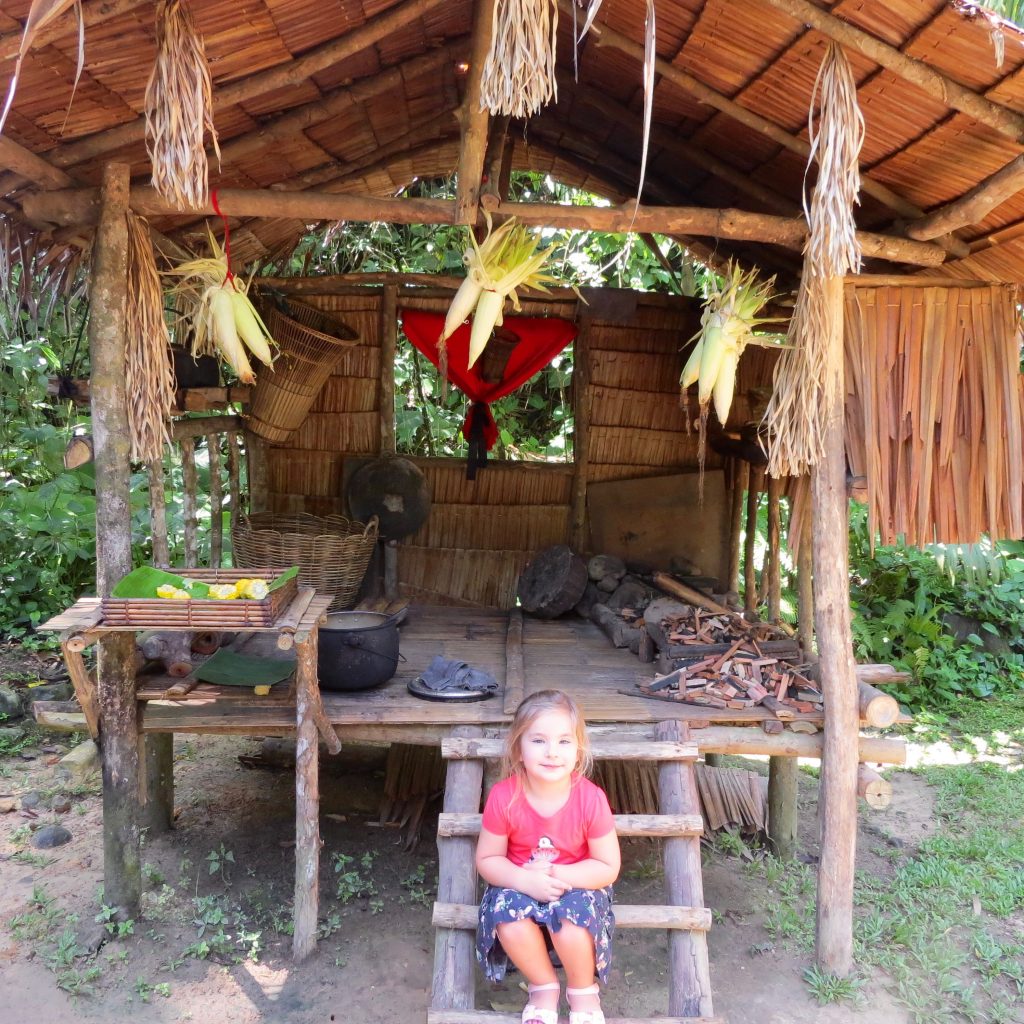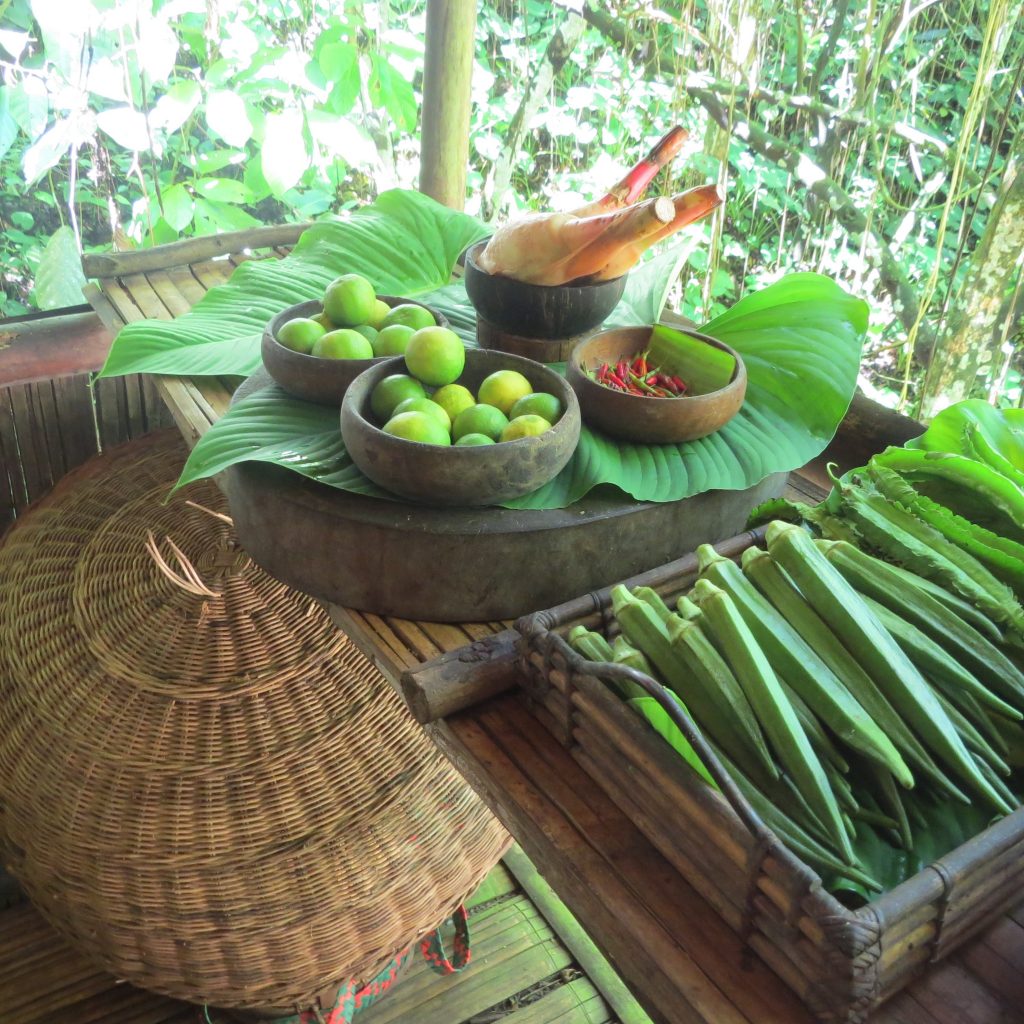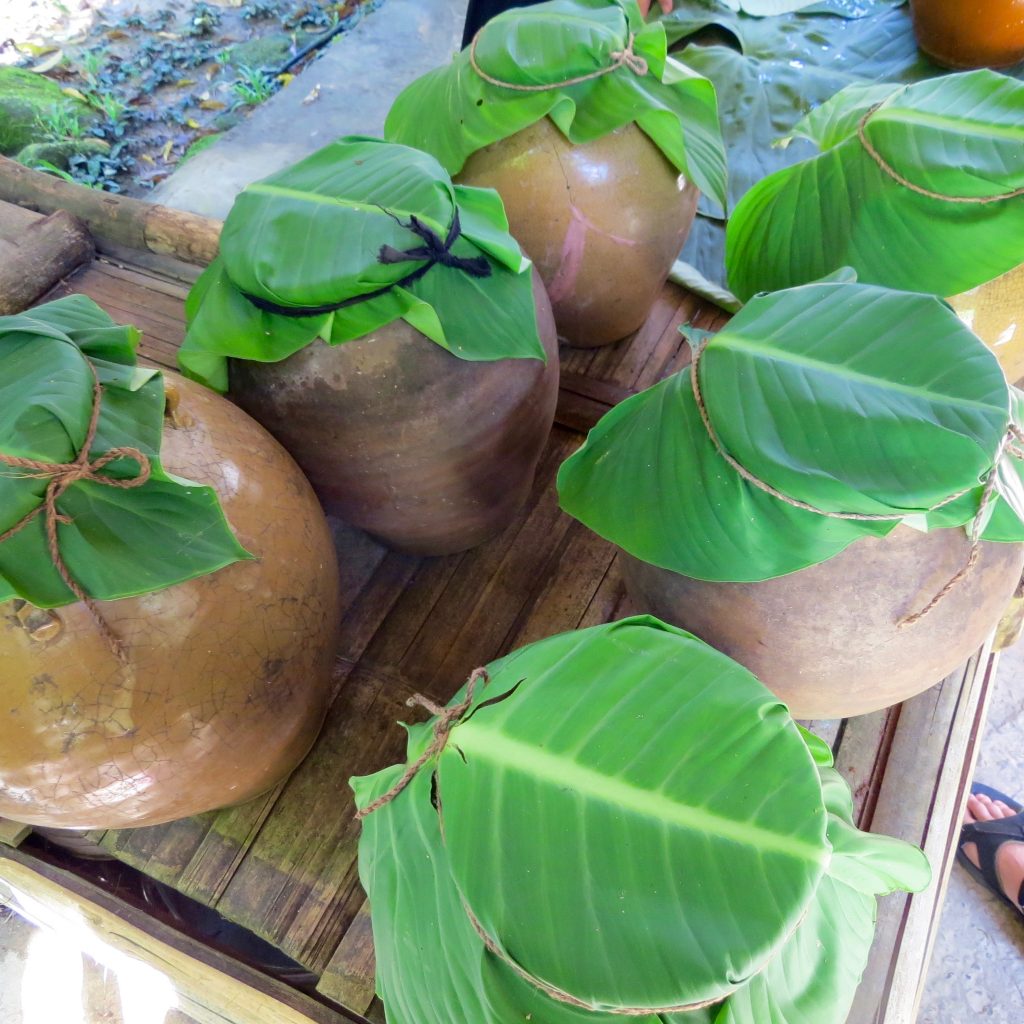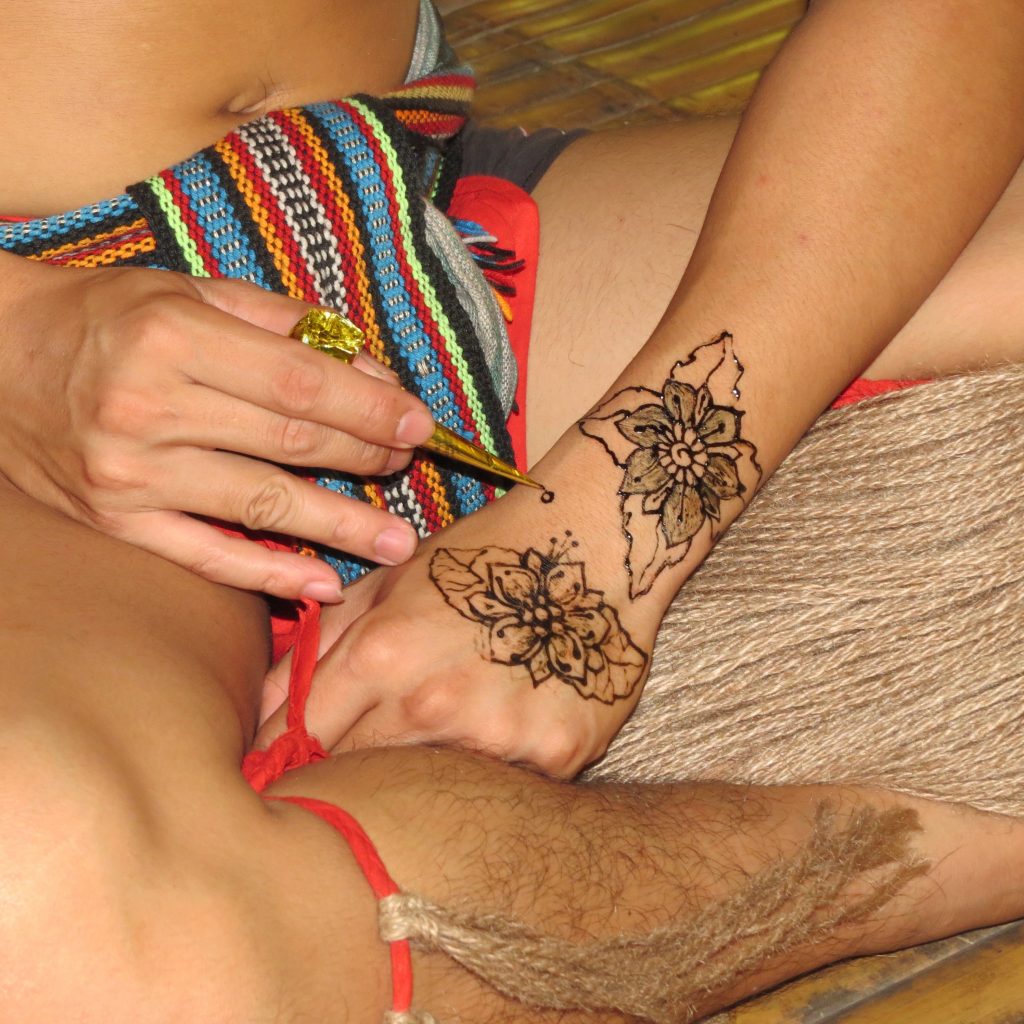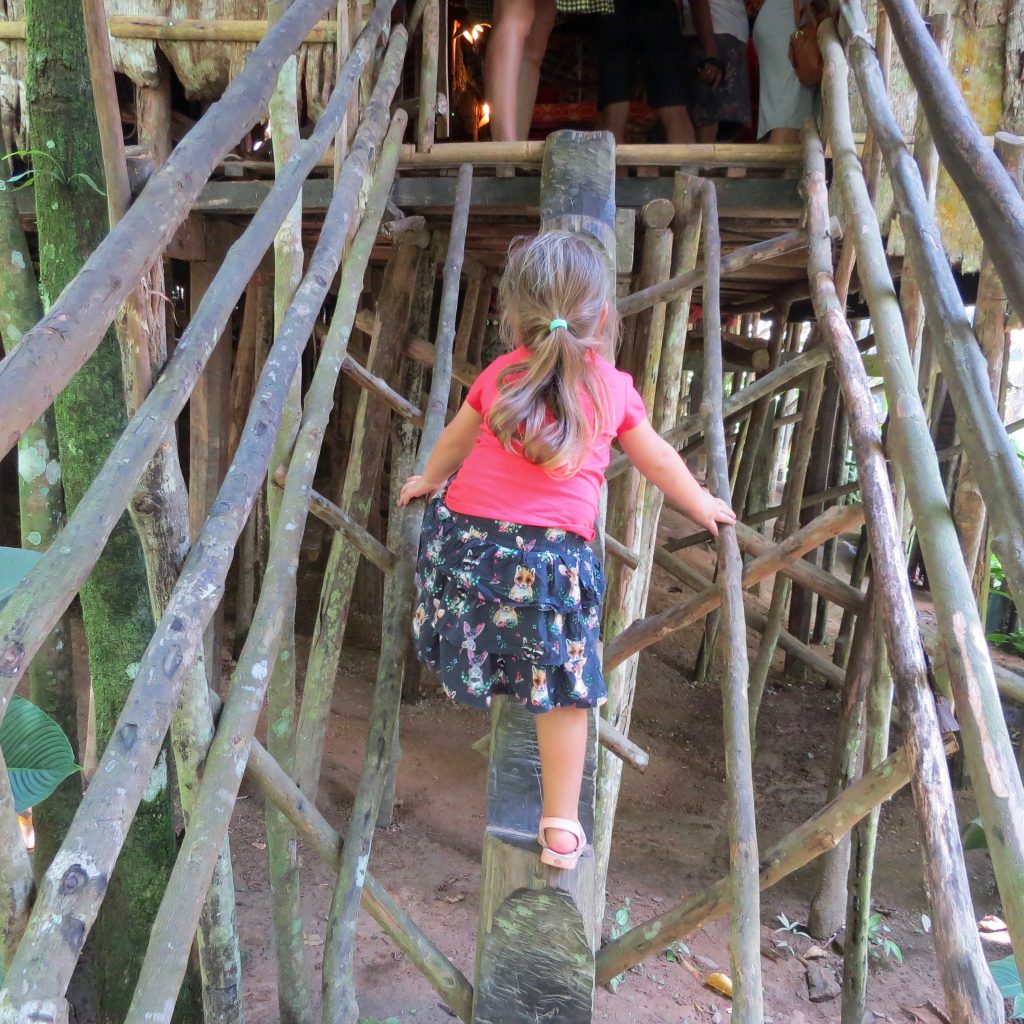In the rainforest near Kota Kinabalu visitors to Borneo have the opportunity to interact with the ancient cultures of Borneo tribes at the Mari Mari Cultural Village. I visited the Cultural Village with my four year old daughter where, with the help of our English speaking guide Baxter we were introduced to the food, beliefs, traditions and dance of Borneo’s traditional tribes. They are the rice farmer Kadazan-Dusun, the longhouse resident Rungus, the hunters and fisherman Lundayeh, the cowboy and sea gypsey Bajau, and the famously feared headhunting tribe Murut. A visit to the Mari Mari Cultural Village involves entering the house of each tribe where we met tribesmen and women who shared their cultures with us. At the start of our tour we are asked to chose a leader from among our tour group – a little challenging for a group of people that are strangers. The leader was to have ritual responsibilities for vouching for our group when it is time to enter the house of the tribe.
Our half day tour was more of a culinary journey than I was expecting – we were offered tastes of the tribes as we went from house to house. Sweet corn, pickled fish (not to my personal liking), rice wine of varying strengths, sweet hot tea, a sweet deep fried snack called kuih jala, ginger chicken and more.
While some of the cultural practices were, when viewed from our western viewpoint, disturbing, these aspects went over my daughters head. We learnt about communal living in long houses where strict rules were enforced to ensure some privacy in a living arrangement that can only be described as intimate. Families were housed in their own rooms in long houses (up to a one hundred at a time) with communal living arrangements. Inhabitants that broke the rules were rolled down hills in wooden cages until they died. We heard about the practice of headhunting that still occurred in Borneo fifty years ago.
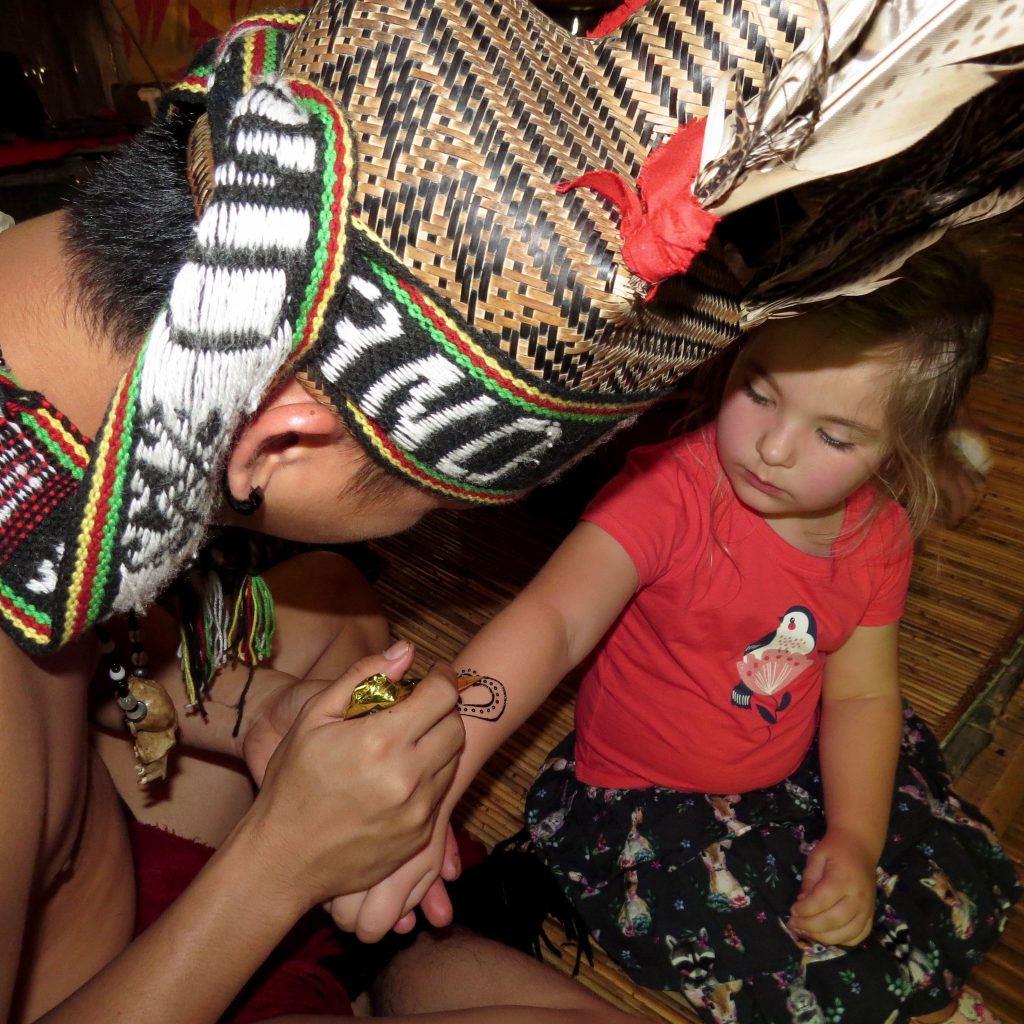
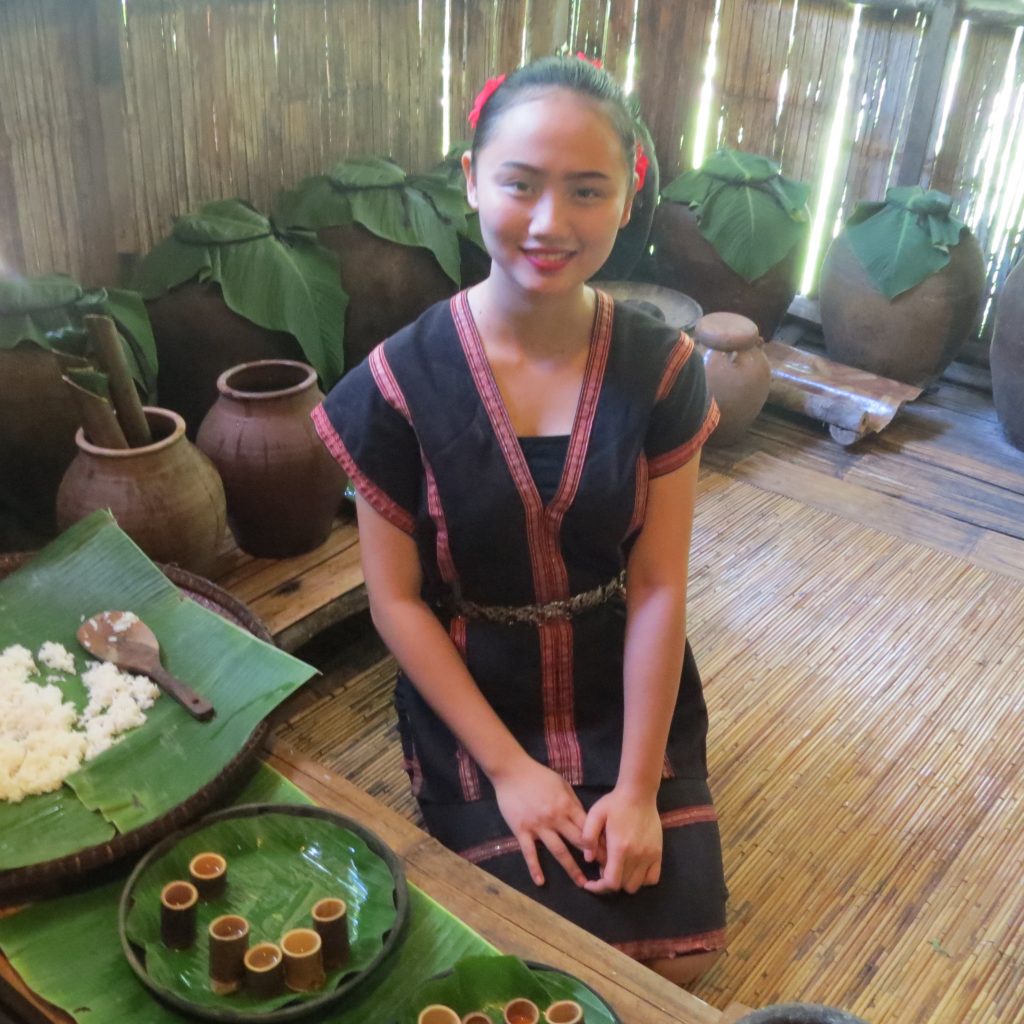 There was also celebration of beautiful aspects of the culture – we were introduced to dances of the tribes in an amazing live performance, were all offered henna tattoos and jumped on a rattan trampoline. As an Australian I was impressed with the precision of the blow darts that we sent into targets and had the feeling that I would choose this as a weapon of choice over a boomerang any day.
There was also celebration of beautiful aspects of the culture – we were introduced to dances of the tribes in an amazing live performance, were all offered henna tattoos and jumped on a rattan trampoline. As an Australian I was impressed with the precision of the blow darts that we sent into targets and had the feeling that I would choose this as a weapon of choice over a boomerang any day.
The number of guests at the Mari Mari Cultural Village when we visited was substantial but our guide kept us moving through the houses in co-ordination with other groups such that we didn’t feel crowded.
My daughter was the only child in an adult group however enjoyed the experience as much as the adults and kudos to our guide for being wiling to answer all her questions.
As if we weren’t full enough from the culinary tidbits we partook of on our tour our experience culminated in a buffet meal of traditional Borneo fare.
Tips to make the most of a visit to the Mari Mari Cultural Village.
- Take bottled water and a hat with you.
- Ensure you bring mosquito repellant.
- If you are a vegetarian communicate this at the time of booking as vegetarians were generously catered for at our lunch.
- Be prepared for older children to be disturbed by some of the violent aspects of these ancient cultures and be ready to answer questions. This isn’t a reason not to take children – the tour is fascinating for children and adults alike.
For more information visit the Mari Mari Cultural Village website.
© Copyright 2018 Danielle, All rights Reserved. Written For: Bubs on the Move

